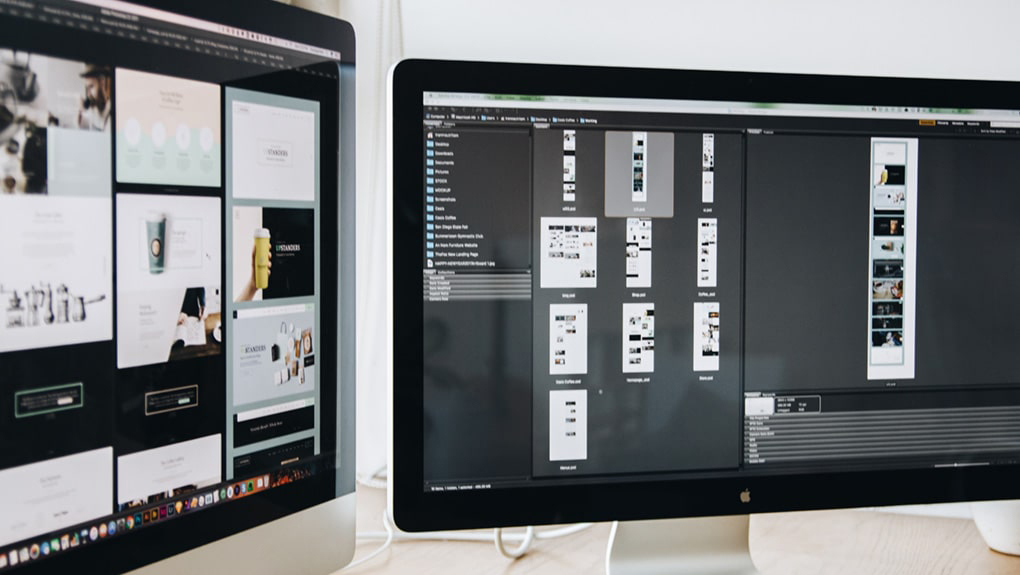|
Getting your Trinity Audio player ready...
|

In the ever-evolving landscape of web design, staying ahead of the curve is imperative for maintaining relevance and captivating audiences. As we embark on the journey through 2024, a myriad of innovative trends and technologies are poised to shape the digital realm. From immersive experiences driven by virtual reality to the subtle nuances of micro-interactions, the year ahead promises a tapestry of creativity and functionality. In this article, we delve into 24 cutting-edge trends that are set to define web design in 2024. From dynamic scrolling animations to AI-powered personalization, each trend offers a glimpse into the future of digital experiences, where user engagement and innovation converge seamlessly.
Scrolling Animations
Scrolling animations enhance user engagement by triggering captivating visual effects as users scroll through content. These animations create a dynamic browsing experience, drawing attention to key elements and ensuring users remain captivated as they navigate the website.
Micro-Interactions
Micro-interactions are subtle yet impactful animations or responses that provide instant feedback to user actions. These small interactions, like button presses or hover effects, improve usability and engagement by making the user experience more intuitive and enjoyable.
Dynamic Cursors
Dynamic cursors transform the standard cursor into an interactive element that changes shape or behavior based on user actions. This trend enhances user experience by guiding attention, providing feedback, and adding a playful, interactive dimension to website navigation.
Interactive 3D Models and Content
Interactive 3D models bring a new level of immersion to web content, allowing users to engage with products or information in a more detailed and engaging way. This technology provides a richer visual experience, making complex concepts easier to understand.
Gamified Design
Gamified design incorporates game-like elements, such as points, badges, and challenges, into websites to boost user engagement and motivation. This approach encourages interaction, increases time spent on the site, and drives desired user behaviors through fun and competition.
Material Design
Material Design, developed by Google, uses principles like realistic shadows, grid-based layouts, and responsive animations to create intuitive and accessible user interfaces. This design trend focuses on delivering a consistent and visually appealing user experience across different devices.
Isometric Design & Illustration
Isometric design uses a 3D perspective to create depth and dimension in illustrations, making web layouts more visually engaging. This trend enhances the storytelling aspect of web design, providing a unique and aesthetically pleasing way to present information.
Claymorphism
Claymorphism incorporates soft, rounded shapes and textures reminiscent of clay models into web design. This playful and tactile approach adds warmth and personality to websites, making them feel more approachable and unique.
Art Deco
Art Deco-inspired web design draws on the elegance and sophistication of the 1920s style, using geometric shapes, bold colors, and luxurious details. This trend creates visually striking websites that stand out with a touch of vintage glamour.
Organic Shapes
Organic shapes in web design emphasize natural, fluid forms and patterns, creating a relaxed and inviting visual atmosphere. This trend moves away from rigid structures, promoting a more harmonious and aesthetically pleasing user experience.
Smart Video
Smart video integration uses video content strategically to convey information, evoke emotions, and engage users without compromising page load times. By optimizing video use, websites can enhance storytelling and user engagement effectively.
Text-Only Hero Images
Text-only hero images focus on minimalism by using bold, simple text to convey powerful messages. This trend captures user attention immediately, creating a strong visual impact with a clean and uncluttered design approach.
Custom Illustrations
Custom illustrations provide a unique and personalized touch to websites, enhancing brand identity and visual appeal. These bespoke artworks differentiate websites from competitors, adding character and making a lasting impression on users.
Full-Page Headers
Full-page headers cover the entire viewport, creating a dramatic and immersive introduction to the website. This trend maximizes visual impact, allowing for compelling storytelling and a seamless transition into the main content.
Dark Mode
Dark mode offers an alternative color scheme that reduces eye strain, saves battery life on mobile devices, and provides a sleek, modern look. This user-preference feature enhances readability and user comfort, especially in low-light environments.
Data Visualization
Data visualization transforms complex data sets into interactive and easily understandable charts, graphs, and infographics. This trend helps users grasp intricate information quickly, making data-driven insights more accessible and engaging.
Full Height Homepage Hero
A full-height homepage hero spans the entire viewport, immediately capturing visitor attention with a striking visual or message. This trend ensures a memorable first impression and sets the tone for the rest of the website content.
Blending Photos With Graphical Elements
Blending photos with graphical elements creates visually rich compositions that combine realism and creativity. This trend enhances storytelling by merging photographic content with illustrative details, resulting in harmonious and engaging visuals.
Frosted Glass Effects
Frosted glass effects add depth and sophistication to web design by creating a semi-transparent, blurred background behind content. This elegant visual treatment enhances readability while adding a layer of modern aesthetics.
Progressive Lead Nurturing Forms Integrated With Your CRM Tool
Progressive lead nurturing forms integrated with CRM tools streamline the lead generation process. These forms capture user data incrementally, enabling personalized communication and follow-up, improving conversion rates and customer relationship management.
Chatbots More Like “Chatbuds”
Advanced chatbots, or “chatbuds,” provide a more conversational, empathetic, and contextually aware user experience. These intelligent bots enhance user engagement and satisfaction by simulating human-like interactions and offering personalized assistance.
Voice-Activated Interface
Voice-activated interfaces cater to the growing use of voice search, enabling hands-free navigation and interaction. This trend enhances accessibility and convenience, allowing users to interact with websites using natural language commands.
Virtual Reality
Virtual reality (VR) creates immersive web experiences by allowing users to explore virtual environments. This trend is ideal for showcasing products, offering virtual tours, or delivering interactive narratives, providing an unforgettable user experience.
AI-Powered Personalization
AI-powered personalization analyzes user behavior and preferences to deliver customized content and recommendations. This trend enhances user engagement and conversions by providing a tailored browsing experience that meets individual needs.
Step into the Future: Unveiling the World of Immersive Web Experiences
Immersive web experiences go beyond traditional web interactions to fully engage users in a digital environment. Here’s a breakdown of what they entail, their implications, and how they’re implemented:
- What are Immersive Web Experiences?
- Immersive web experiences leverage technologies such as virtual reality (VR), augmented reality (AR), interactive 3D graphics, spatial audio, and advanced multimedia to create environments that users can explore and interact with.
- These experiences aim to deeply engage users by providing them with a sense of presence, making them feel like they’re physically present in the digital space.
- Implications:
- Enhanced User Engagement: Immersive experiences can captivate users’ attention for longer periods, leading to increased engagement and interaction with the content.
- Enhanced Branding and Marketing: Brands can use immersive web experiences to create memorable interactions with their audience, leading to stronger brand recognition and loyalty.
- New Opportunities for Education and Training: Immersive web experiences can be used to create realistic simulations for training purposes or educational content that is more engaging and interactive than traditional methods.
- Improved Product Visualization: E-commerce websites can use immersive experiences to allow customers to visualize products in 3D or AR before making a purchase decision, leading to higher conversion rates.
- Implementation:
- VR and AR Technologies: Implementing immersive web experiences often involves leveraging VR and AR technologies. This can include using frameworks like WebVR and WebXR to create VR and AR content that can be accessed through web browsers.
- 3D Graphics and Animation: Immersive experiences often incorporate interactive 3D graphics and animations to create realistic environments. Technologies like WebGL and Three.js are commonly used for rendering 3D graphics in web browsers.
- Audio and Spatial Interaction: Spatial audio can enhance the sense of immersion by providing realistic sound cues that correspond to the user’s position within the virtual environment. Web Audio API and other audio libraries can be used to implement spatial audio in web-based experiences.
- Optimization for Performance: Immersive web experiences often require high-performance graphics and audio rendering. Optimizing content for performance is crucial to ensure smooth and responsive experiences, especially on devices with limited processing power.
Overall, immersive web experiences offer exciting opportunities to create engaging and interactive digital environments that can be accessed directly through web browsers, without the need for additional plugins or software installations.
To Bring It All Together
In conclusion, the landscape of web design in 2024 is rich with possibilities, offering a fusion of creativity, functionality, and user-centricity. As we’ve explored the 24 trends shaping the digital realm, it’s evident that the future of web design is dynamic and diverse. From the immersive experiences facilitated by virtual reality to the personalized interactions powered by AI, each trend presents opportunities for brands and designers to elevate their online presence and engage with audiences in meaningful ways. By embracing these trends and staying attuned to evolving user preferences and technological advancements, businesses can navigate the digital landscape with confidence, ensuring their websites remain both cutting-edge and user-centric in the years to come.




